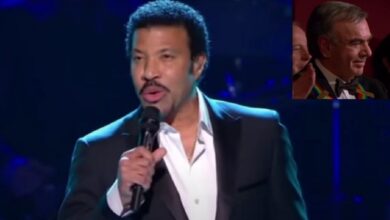Can You Remember This Popular Dance From The 1950s
The phenomenon of “The Stroll” is a fascinating intersection of music, culture, and youth identity, encapsulating a vibrant period in American history. The late 1950s were marked by significant social transformation, with young people yearning for expression amidst the backdrop of post-war conservatism. As rock ‘n’ roll emerged as the enticing soundtrack of teenage life, it was no coincidence that such a lively dance captured the imagination of youth across the nation. The infectious spirit of “The Stroll” resonated with teenagers who were eager to carve out a unique identity, one that was distinct from the older generations.
Originating in African American communities, “The Stroll” exemplified the creativeness that often emerges in the face of cultural oppression. Its rise to mainstream popularity through programs like “American Bandstand,” hosted by Dick Clark, demonstrated the power of media in shaping trends and bridging cultural gaps. Teenagers, regardless of race, found common ground on dance floors as they embraced this celebratory expression. The dance’s simplicity allowed for improvisation, making it a perfect outlet for personal and collective joy. It also sparked a sense of community, as friends and strangers alike participated in this joyful spectacle.
The music accompanying “The Stroll” played an equally important role in its success. “The Stroll” by The Diamonds, with its catchy melody and smooth vocal harmonies, became an anthem for the dance. The band’s lead singer, Dave Somerville, brought a magnetism to the performance that drew listeners and dancers alike. The Diamonds mastered the doo-wop style, creating a sound that was irresistible to teenage audiences. The lyrics and rhythm encapsulated the carefree spirit of the age, encouraging young people to rise from their seats and join the celebration on the dance floor.
The Stroll became a cultural touchstone of teenage life in the US, manifesting in school dances, parties, and community gatherings. The phenomenon extended beyond mere entertainment; it became an integral part of the youth’s lifestyle, a ritual that allowed them to connect with one another and express their burgeoning independence. Across the country, the simple act of lining up and strutting down an aisle became a rite of passage, symbolizing the pleasures and freedoms of youth. The dance served as a reminder that even amidst societal changes and challenges, young people could create their own spaces filled with joy and creativity.
Interestingly, “The Stroll” also speaks to the broader cultural shifts occurring in the 1950s. This was a time of great tension regarding race relations in America. While the dance originated from African American traditions, its adoption by a wider audience served as a subtle challenge to the segregationist attitudes of the time. It invited everyone, regardless of background, to participate in a shared cultural experience. While not a solution to systemic issues, the unifying power of music and dance provided a glimpse of what was possible when barriers were broken down, even if only temporarily.
As the years passed, the dance’s impact proved enduring, reflected in various revivals and adaptations throughout the decades. “The Stroll” found itself celebrated in different forms, from family gatherings to movies and television shows. The essence of the dance, representing fun and freedom, has inspired new generations, often leading them to rediscover the infectious energy of earlier decades. This cyclical nature of cultural phenomena highlights the importance of community, connection, and creativity across generations.
In discussing the legacies of figures like Dave Somerville and The Diamonds, it’s important to recognize that they were not just entertainers but pivotal contributors to the fabric of American culture. Somerville’s rich vocal style and charismatic stage presence left an indelible mark on the doo-wop genre and inspired countless singers who followed. The Diamonds were part of a broader movement that revolutionized the music industry, paving the way for future vocal groups and solo artists. Their influence can be seen in contemporary music, where the harmonies and styles they popularized continue to thrive.
Music and dance are pivotal to human expression, and “The Stroll” exemplifies how the two can intertwine to create a communal experience. Dance possesses the unique ability to dissolve barriers, introducing participants to one another through movement and rhythm. It cultivates an environment where joy and self-expression flourish. The Stroll became a symbol of an era marked by physical movement, rhythmic beats, and a collective sense of belonging.
Ultimately, “The Stroll” represents more than just a dance or a song; it is a narrative woven into the quilt of American history. The memories embedded in the dance are reminiscent of simpler times, where social interactions flowed freely, bound only by the beat of the music. As we reflect on this dance craze, we celebrate not just the aesthetics of movement and sound, but the stories of the young people who embraced the spirit of the 1950s with enthusiasm and exuberance. In this way, music and dance like “The Stroll” continue to remind us of the enduring power of joy and connection in shaping our shared cultural identity.
?si=CbHsPwTM-VodZAIG





